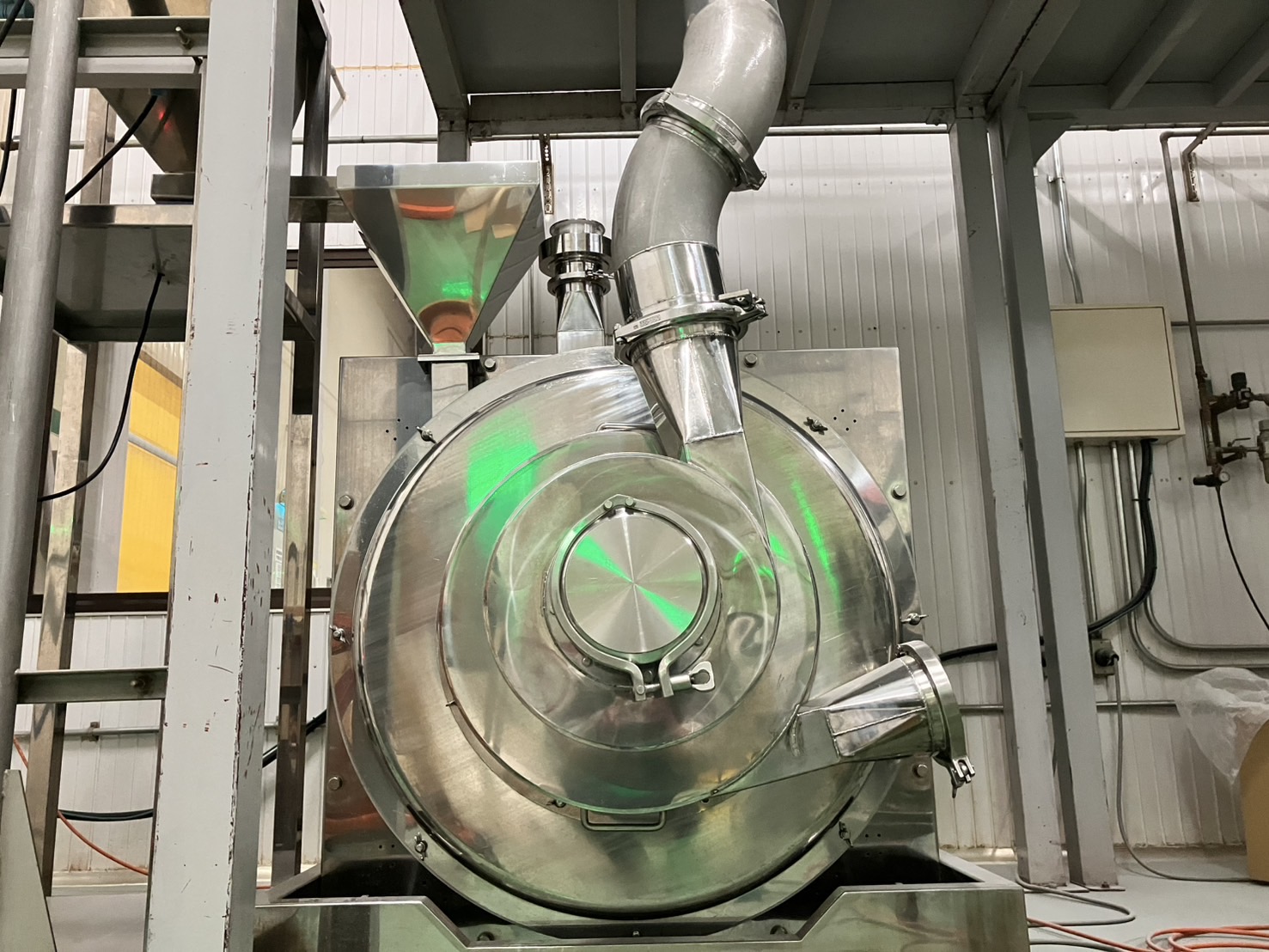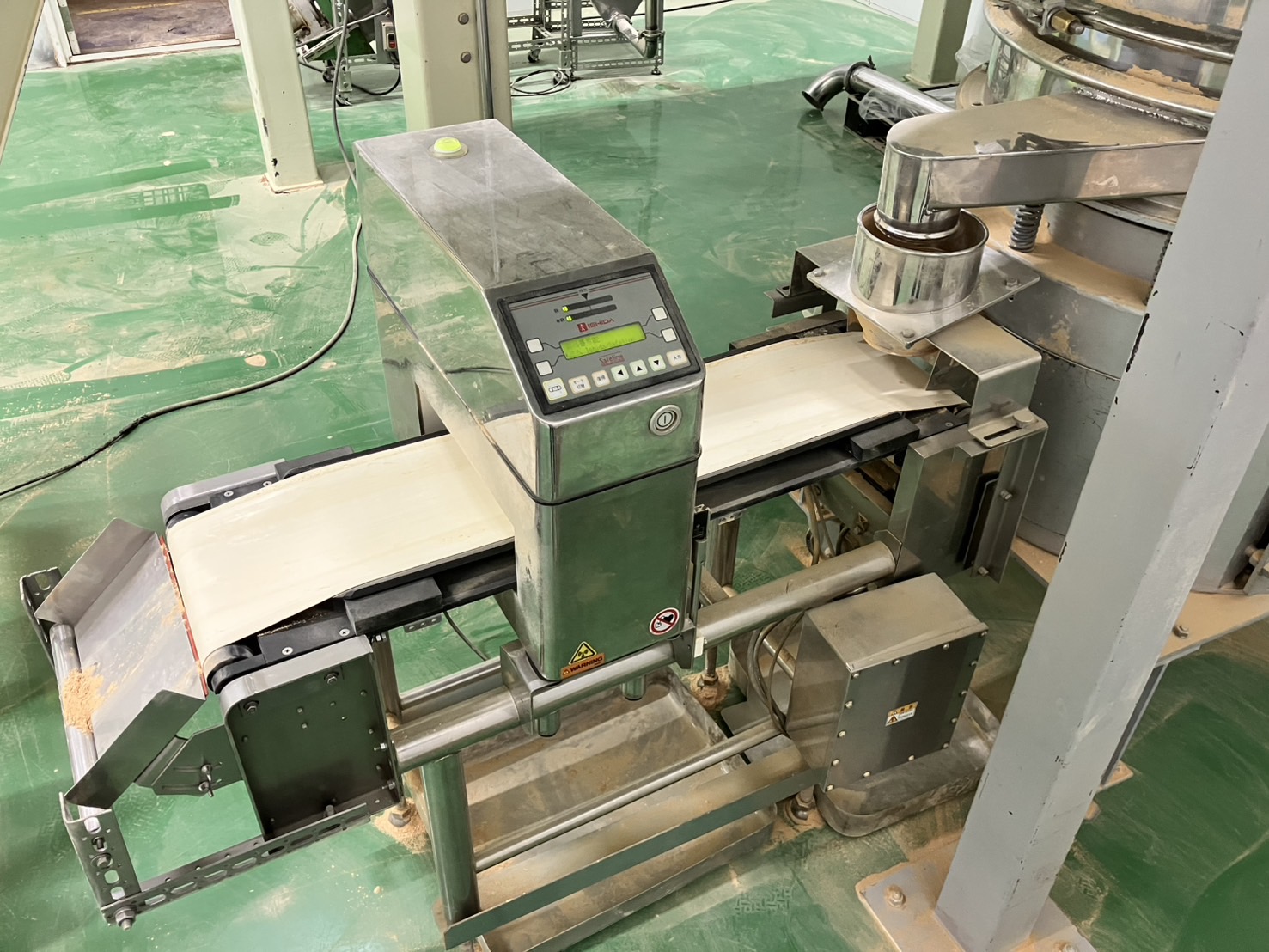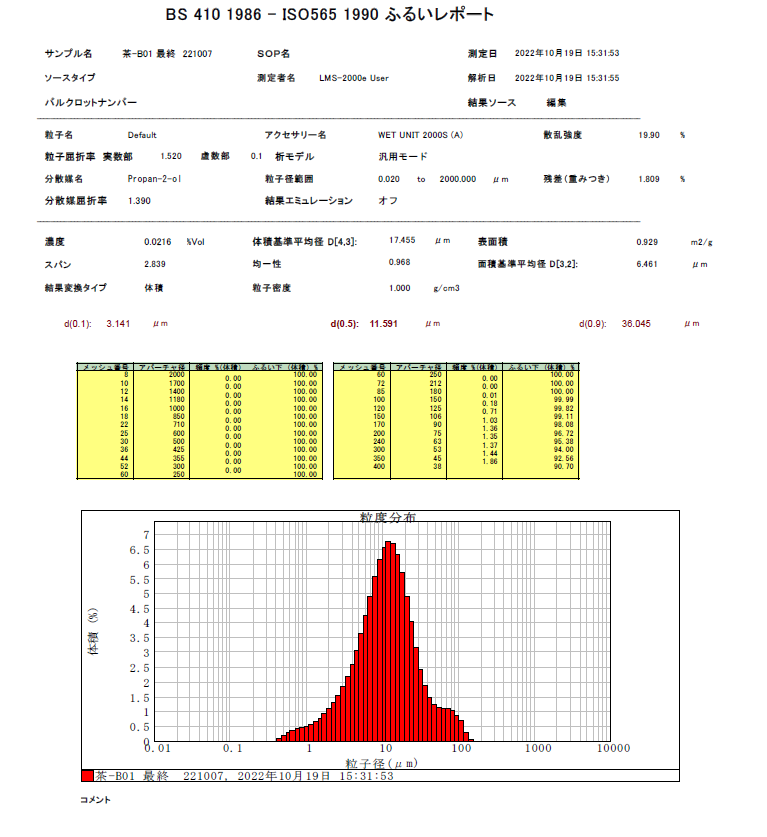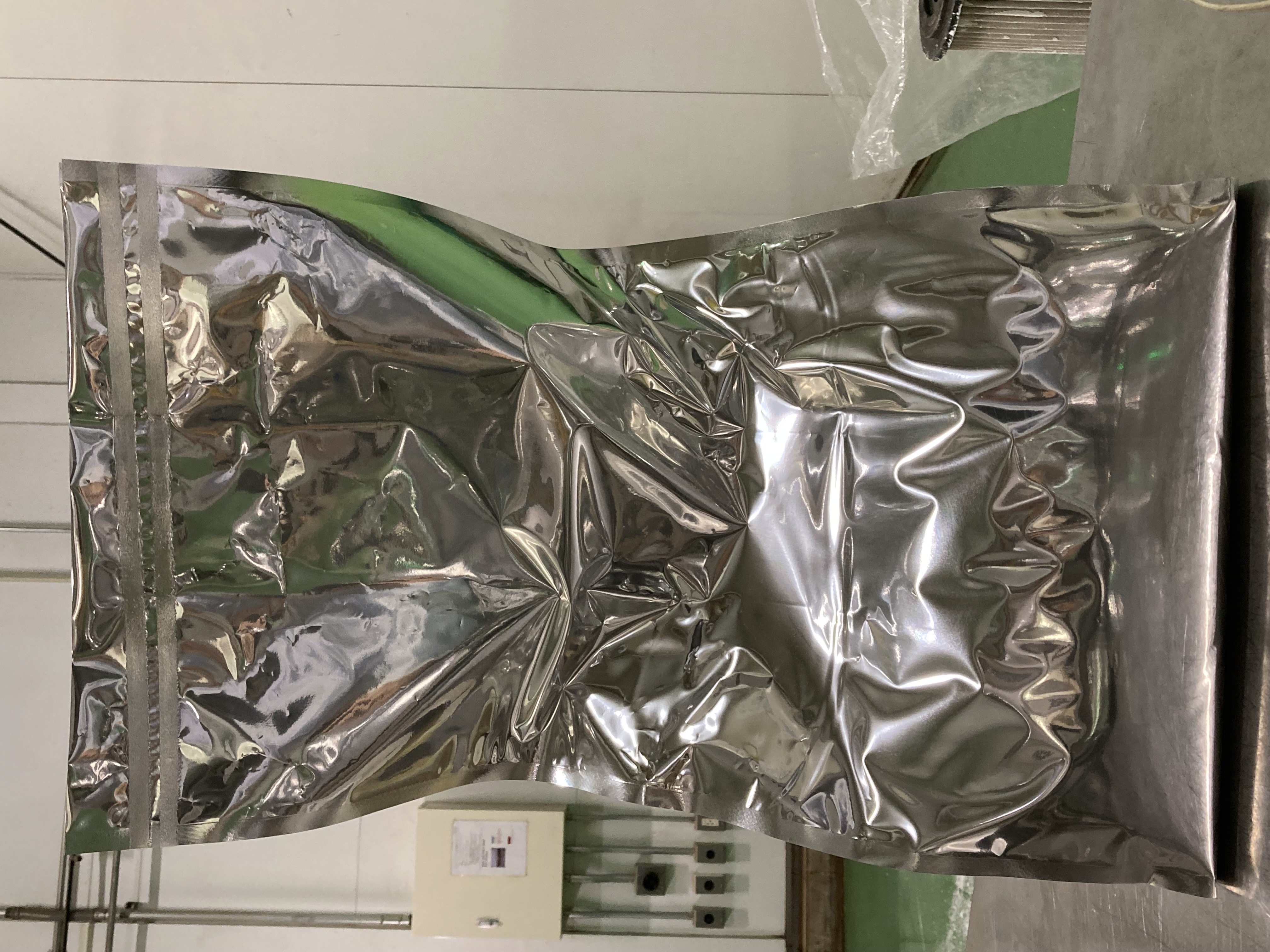About the pulverizing line
About fine grinding line
Flow chart of fine grinding process
STEP 01
Pulverization process
Rotation of the blades generates a swirling air current that crushes the material.

STEP 02
Removal of foreign matter
Foreign objects are removed by magnets, sieve sorting, and metal detectors.

STEP 03
Particle size measurement
The average particle size of the pulverized product is measured to ensure quality.

STEP 04
Filling and packaging
Fill and pack in aluminum bags with 10kg~20kg fill weight.

Features of fine grinding mills
| Grinding Principle | Feature |
| Impact | ・High crushing and processing capacity ・Susceptible to heat |
| Friction | ・Suitable for hard fibers ・Susceptible to heat |
| Tearing | ・Heat resistant ・Low throughput |
| Collection Method | Feature |
| Screen type | ・Low cost, independent of raw material characteristics ・Fragrance does not jump easily ・Clogged up easily |
| Air classification type | ・Less clogging and sharp particle size distribution ・Knowledge required (depends on raw material characteristics) ・Fragrance tends to fly off |
Features of our fine grinding machines
| Type | Structure | Grinding Principle | Collection Method | Whether or not our company owns |
| Airflow mill | ・Rotation of the rotor and blades generates a swirling airflow, and the airflow pulverizes |
Tear off | Air classifier | Possession |
| Hammer mill | ・Crushed by high-speed rotating hammers | Impact | Screen | Possession |
| Pin mill | ・Crushing by impact generated by rotating pin disk | Impact | Screen | Possession (Used in soybean processing lines) |
Advantages of our fine grinding machines
※We also own a pin mill, but this page introduces the features of airflow grinding mill.
| Suitable for heat-sensitive raw materials | Since the time spent inside the crusher is short (less than 1 second), the temperature rise is small, making it suitable for processing materials that are easily thermally denatured. |
|---|---|
| Contamination suppression | The structure of the crusher has no metal-to-metal collision or contact areas, resulting in less wear on the machine and less contamination. |
| Hygienic processing | Since the machines can be disassembled and cleaned, various products are disassembled and cleaned for each production. |
| Sharp particle size distribution | Automatic classification system ensures sharp particle size distribution. Particle size distribution data can be disclosed because the Nara Plant has its own particle size analyzer. |
| Organic crops can be produced | Due to the Organic JAS certification line, contract processing of organic agricultural products is available. Application is required for each item, so please consult with us. |
Frequently Asked Questions
In which plant is the pulverization process performed?
We own fine pulverizers at “Nara Plant” and “Asahikawa Plant”. We will guide you according to the type and quantity of raw materials used.
Is contract processing of allergenic raw materials possible?
In the case of allergenic raw materials, we basically guide processing at “Asahikawa Plant”.
Is it possible to specify the particle size of the finished product for fine milled products?
We use “average particle size” as a reference value.
What is your processing order quantity?
For processing at the Nara Plant, the economic lot size is from about 1 ton due to the large size of its facilities. For orders from outside Hokkaido, please note the transportation cost.
Is it possible to cut and dry the raw material before pulverization?
Since we own coarse crushers, we will cut and pre-process before fine crushing if necessary. We do not own any vegetable drying equipment, so we will either ask our customers to handle this for us, or we will refer you to other companies.
How much prototype raw material do you need?
For mini-tests to see if it can be crushed, we can do so with as little as 100 g. We also do prototypes on actual equipment. We also use actual equipment for trial production, and we can provide information from about 10 kg for checking the average particle size, and from several dozen kg for verifying several patterns.
Are prototypes paid for?
A fee will be charged for the use of actual equipment. Please contact us for details.